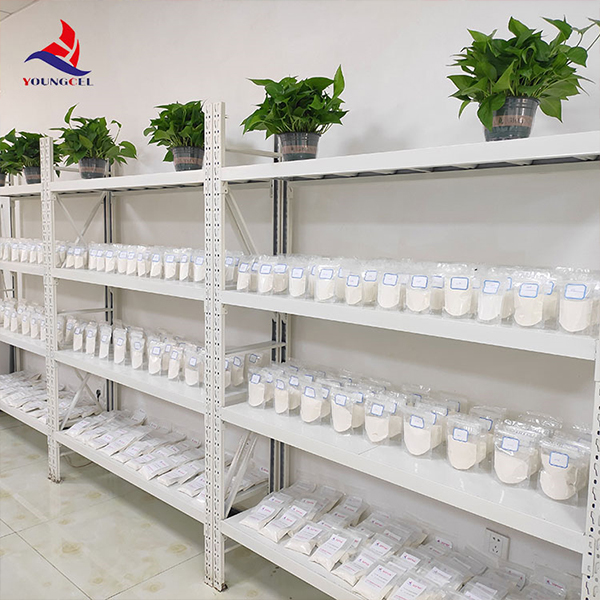The Use of Additive for Putty Enhancing Performance and Versatility
Putty is a versatile material commonly used in construction and home improvement projects, primarily for filling gaps, cracks, and joints. While traditional putty formulations have served their purpose for decades, the introduction of additives has significantly enhanced the performance, durability, and versatility of putty products. This article explores the various types of additives that can be incorporated into putty, their benefits, and how they contribute to improved end results.
Understanding Putty and Its Typical Uses
Putty is primarily composed of a binding agent—typically a filler material mixed with oils or water that hardens over time. It is frequently used for sealing windows, making repairs in drywall, and providing a smooth finishing surface before painting. Regardless of the application, the effectiveness of putty hinges on its formulation and the quality of materials used.
The Role of Additives in Putty Formulations
Additives are substances added to the base putty to modify its properties and improve performance. The inclusion of specific additives can enhance characteristics like adhesion, flexibility, drying time, and resistance to environmental factors such as moisture and temperature fluctuations. Here are some common types of additives used in putty formulations
1. Polymer Additives These enhance the elasticity and adhesion of putty, allowing it to bond more effectively to various substrates. Polymer-enhanced putty is particularly beneficial in outdoor applications, where exposure to varying weather conditions can compromise the integrity of the seal.
2. Fillers Mineral-based fillers such as talc, calcium carbonate, and silica are often incorporated to improve the texture and thickness of putty. These fillers can improve the crack-filling capacity of the putty and provide better surface finish.
3. Pigments While not functional in the structural sense, pigments can be added to create colored putty that matches existing surfaces. This is particularly advantageous for aesthetic purposes, making the repairs blend seamlessly with the surrounding materials.
4. Accelerators In certain formulations, additives that speed up the curing time are included. These are especially useful in colder climates or when quick repairs are necessary, allowing the putty to harden sufficiently for painting or additional work soon after application.
additive for putty

5. Anti-fungal and Anti-bacterial Agents To prevent mold and bacteria growth in damp environments, additives with anti-fungal properties are increasingly used. This is particularly important in areas like bathrooms and kitchens, where moisture levels are typically higher.
6. Surfactants These additives improve the spreadability and application of putty. They help achieve a smoother finish and make the material easier to work with, reducing the effort needed for application.
Advantages of Using Additives in Putty
Incorporating additives into putty formulations offers several benefits
- Improved Durability Additives can enhance the overall strength and resilience of putty, making it more resistant to cracking and shrinking over time.
- Flexibility in Application Various formulations are available that cater to specific needs, whether it’s a fast-setting type for urgent repairs or a more flexible variant for areas prone to movement.
- Enhanced Aesthetic Qualities The ability to color putty using pigments means that repairs can be visually unobtrusive, making it easier to maintain a clean and unblemished finish.
- Environmental Resistance Additives help create formulations that stand up to environmental challenges, thereby extending the lifespan of repairs and coatings.
Conclusion
The evolution of putty, particularly with the addition of specialized additives, has greatly improved its functionality and effectiveness in various applications. By selecting the right type of putty enhanced with appropriate additives, homeowners and professionals alike can achieve superior results. Whether tackling straightforward repairs or sophisticated architectural projects, the right additive for putty can make a significant difference in both appearance and durability. With continued advancements in material science, the future of putty formulations looks promising, providing even more options and enhancements for all kinds of applications.
-
Rdp Powder: Key Considerations for Wholesalers in the Building Materials IndustryNewsJul.08,2025
-
Key Considerations for Wholesalers: Navigating the World of Hpmc - Based ProductsNewsJul.08,2025
-
Hpmc Detergent: Key Considerations for WholesalersNewsJul.08,2025
-
Key Considerations for Wholesalers: China Hpmc For Tile Adhesive, Coating Additives, Concrete Additives, and MoreNewsJul.08,2025
-
Crucial Considerations for Wholesalers: Navigating the World of Construction MaterialsNewsJul.08,2025
-
Key Considerations for Wholesalers Sourcing Additive For Cement, Additive For Concrete, Additive For Putty from Additive Manufacturer Shijiazhuang Gaocheng District Yongfeng Cellulose Co., Ltd.NewsJul.08,2025




